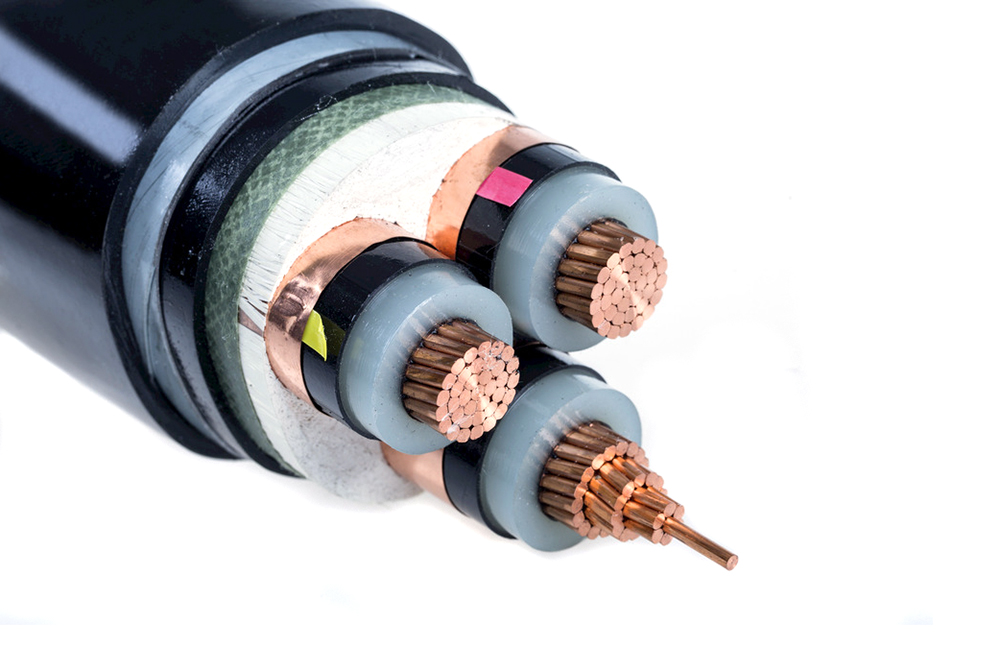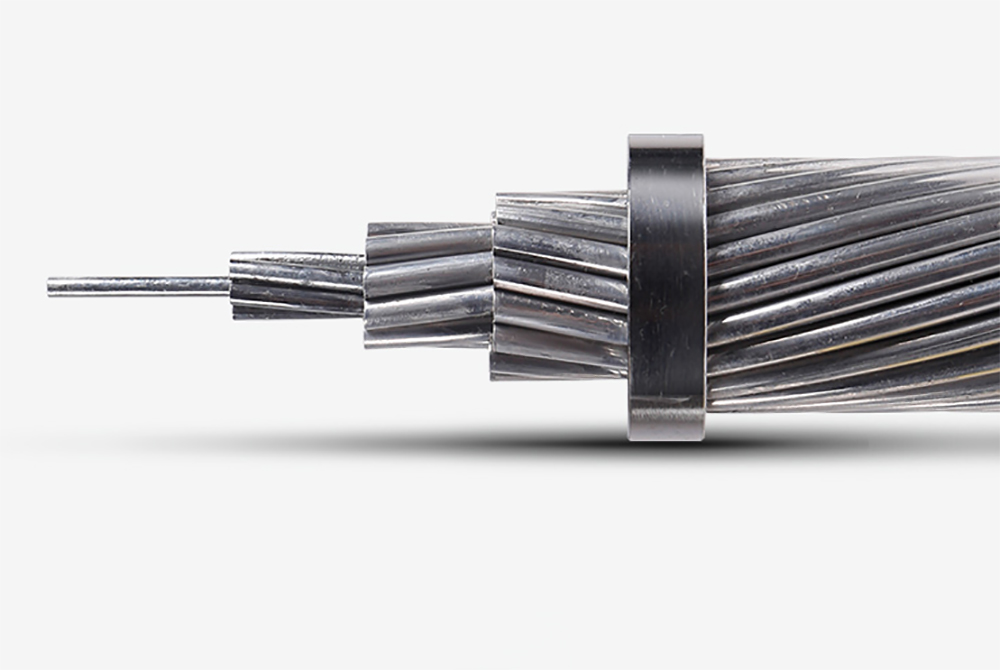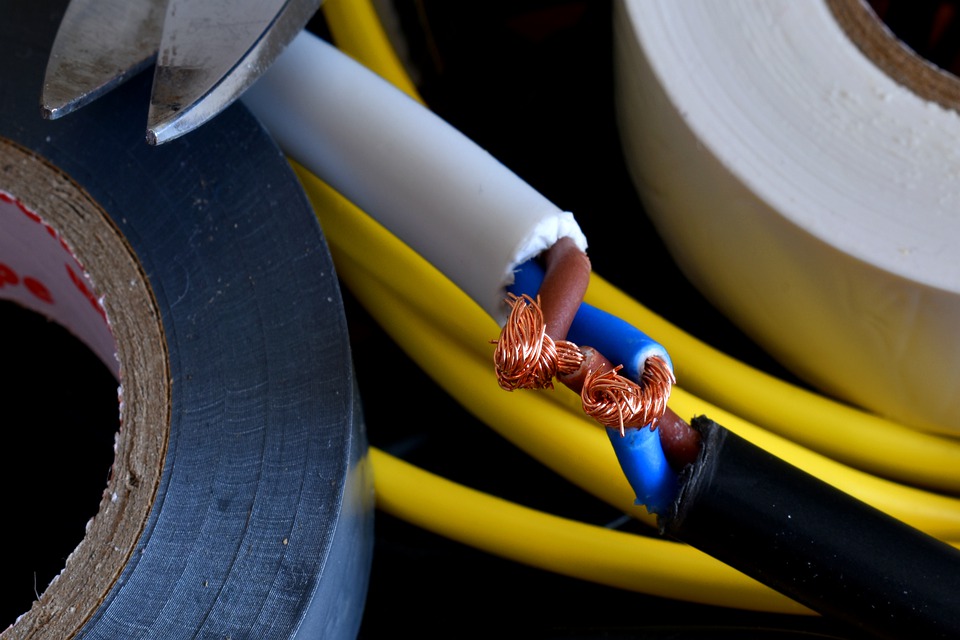Because cables are used in many different environments, they look very different in appearance. But regardless of any cable type, they are used as a conductor for signal transmission. These acsr conductor size also have different quality performances in transmitting different signals. Except for some special applications, the cables currently used for audio and video transmission are mainly single wires, twisted pairs, coaxial wires and optical fibers.

1.1. Single wire
A single wire is the most basic type of cable (such as a wire). It consists of one or a group of wires surrounded by a plastic protective layer. This kind of cable is commonly used to transmit low-frequency signals, such as power, audio, and computer ID code.
1.2. Twisted pair
Twisted pair is a general term. There are no restrictions on the number of wires and the type of twisting, but there are only two types in the structure of the cable: twisted pair with shielded net (STP: ShieldedTwistedPair) and without shielded net Twisted pair (UTP: UunshieldedTwistedPair). Twisted-pair cables are commonly used in telecommunications, the Internet, and professional audio. This aaac conductor full form is composed of two or more independent and mutually insulated cables that are continuously twisted. Two of the cables that are twisted to each other are called a group. , The transmission impedance is generally 100_, and the diameter of a single wire is between 20AWG (American wireline standard: 0.91mm) and 24AWG (0.61mm). Twisted pair is a relatively inexpensive cable. Each set of wires has the same anti-interference ability, which can effectively suppress external electromagnetic interference (EMI) and effectively shield the transmission signal from electromagnetic interference to the outside world.
UTP cables are most commonly used in telecommunications transmission and computer network environments. According to the type of twisting, they are divided into five, super five and six types of cables. Generally, they can reach a transmission rate of 100Mbps (100 million bits per second). The STP cable adds a layer of woven metal mesh or tin foil to the periphery of the wire group, which is more conducive to improving the signal and suppressing the impact of external radio waves. The metal shell of each connector of the STP cable must maintain good contact with the shielding net.

1.3. Coaxial cable
Coaxial cable (Coaxial) is a composite composed of two conductors. The center wire of the coaxial cable is used to transmit signals. The metal shielding net plays two roles: one is to provide current for the signal as a common ground wire for the signal. The second is as a shielding net for the signal, which suppresses the interference of electromagnetic noise on the signal. The center wire and the shielding net are between the semi-foamed polypropylene insulation layer. The insulation layer determines the transmission characteristics of the aac cable and effectively protects the wires in the middle.
Coaxial cables are widely used in audio, video or radio frequency transmission, and the transmission impedance is generally 75_, which has become the standard impedance of video (in the early days, 50_ impedance characteristics were also used for video transmission). High-quality standard coaxial cables are generally more expensive than twisted pairs because of the reliable physical characteristics of coaxial cables, which can provide excellent audio and video performance. The frequency and resolution of the signal and the effective transmission distance of the cable play a decisive role in the audio and video system.

1.4. Optical fiber
Optical fiber cable (OpticCable) is the best choice for long-distance signal transmission. Optical fiber transmission is a technical method based on photoelectric conversion instead of electronic transmission. The simple principle of optical fiber transmission is: the analog electric signal is transmitted to the optical transmitter, and the input voltage signal is converted into a current signal through the signal buffer circuit and the driving circuit, and the light-emitting tube or laser is driven. In this way, the input electrical signal is converted into an optical signal, which is coupled into the optical fiber through precise optical alignment and guidance.
After the optical signal is transmitted through the optical fiber, at the receiving end the optical signal is converted into the original electron source by a wavelength-matched photodiode, and then output after being amplified by a low-noise linear amplifier.
Optical fiber signal transmission avoids many shortcomings of traditional cable transmission, and has many advantages that cable transmission can’t match; Excellent anti-electromagnetic interference: In long-distance cable transmission, the cable itself is a huge antenna, which picks up electromagnetic signals in the surrounding space. , Especially in the display system, this kind of interference signal shows the granular noise that cannot be eliminated in the image display. The core of the fiber optic cable is glass, and it transmits optical signals, which is not easily interfered by external electromagnetic waves.
Very small volume: Most optical fibers are as thick as human hair.
Very low attenuation: Because the optical fiber transmission is completed by the glass conduit, there is no signal attenuation caused by the cable resistance and capacitive reactance. The optical fiber greatly improves the transmission bandwidth and transmission distance. High security of optical fiber: The signal content transmitted by optical fiber is not easy to be eavesdropped on.
Although optical fiber seems to be the ultimate method of signal transmission, there are some disadvantages;
Higher prices: optical cables, transmitters, and receivers are expensive
High labor: In the process of arranging and routing optical cables, a lot of human resources and special tools are required. Although the transmission loss of the optical signal in the optical fiber is very low, the attenuation of the signal by the electro-optical and photoelectric conversion at the transmitting end and the receiving end is very severe. Therefore, to ensure no insertion loss transmission, it is necessary to add a high-gain multi-stage amplifier to the transmission, and to ensure that the circuit can work stably.
